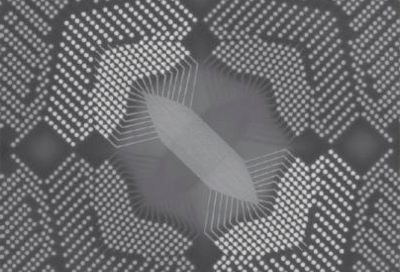R Colin Johnson
EE Times
Memristors were conceived by electrical engineer Leon Chua in his seminal 1971 paper "Memristor – the Missing Circuit Element".
 |
| Professor Leon Chua |
By mathematical necessity, according to Chua, a fourth passive electronics component – after resistors, capacitors and inductors – must exist. His argument was reminiscent of the inventor of the periodic table, Russian chemist Dmitri Mendeleev, who claimed that by mathematical necessity there were missing elements in the periodic table that must exist. Both were right. Mendeleev's missing elements were eventually discovered, and in 2006 Hewlett Packard Senior Fellow Stan Williams likewise discovered Chua's missing-memristor.
Chua called his fourth passive circuit component a memristor, because it "remembered" the amount of current that had recently been flowing through it by changing its internal resistance – making it a memory-resistor. HP's formulation was titanium-dioxide, but since them many other semiconductor manufacturers have come forward to disclose that they had also been working on memristive materials in their efforts to build a universal memory type – called a resistive random access memory (ReRAM).
As a result, approximately 40 years after memristors were postulated by Chua, these materials are finally achieving widespread commercialization as universal memory chips that are nonvolatile, denser than flash, and yet faster than DRAM. A remarkable spectrum of semiconductor houses are promising memristive microchips, some as early as 2013, including Adesto Technologies, Elpida, Fujitsu, Global Foundries, Hewlett Packard, Hynix, IBM, Macronix, Nanya, NEC, Panasonic, Rambus, SanDisk, Samsung, Sharp, Sony, ST Microelectronics, Winbond, 4DS, and several research labs like IMEC collaborating with foundry partners like TSMC.
What you may not be aware of, however, is that the next 40 years are likely to be even more significant for memristors, as the basis of a new era of cognitive computers based on the architecture of the human brain. Spear-headed by the Defense Advanced Research Projects Agency (DARPA) program called Systems of Neuromorphic Adaptive Plastic Scalable Electronics (SyNAPSE) research labs are pioneering a new era of cognitive computers. Participants included IBM, Hewlett Packard, and HRL Labs in cooperation with Boston University, Columbia University, Cornell University, Stanford University, University of California at Merced, and the University of Wisconsin at Madison.
Chua anticipated the application of memristors to artificial neural networks as far back as 1976 in his Proceedings of the IEEE paper Memristive Devices and Systems where he noted that the neuroscience standard model for neurons – the Hodgkin-Huxley model – was mathematically identical to a memristor.
HRL Labs breakthru
Today that insight has been revitalized by HRL Laboratories LLC (formerly Hughes Research Laboratories) and its Center for Neural and Emergent Systems (CNES) which has embraced the use of memristors as artificial synapses with funding from DARPA's SyNAPSE program.
Unlike the common titanium-dioxide material, HRL Labs has created a refined material stack with intrinsic rectification properties that it claims solve the "sneak path" problem that slowed early development efforts of memristive materials in crossbar arrays.
 |
| HRL's memristor crossbar array fabricated atop a CMOS chip can store 10 Gbits per square centimeter |
"These memristors have an intrinsic diode like behavior that prevents currents from sneaking through in the reverse bias direction and affecting the stored memory values," said program manager and principal investigator Narayan Srinivasa.
HRL's formulation store a precise analog values corresponding to the synaptic strength between brain-like neurons, then puts the neurons themselves on a companion chip.
 |
| Dr. Narayan Srinivasa |
"Our neuromorphic architecture uses a rich programmable brain-like connectivity," said Srinivasa. "To enable this connectivity, we have decoupled the memristor array from the neuromorphic architecture, putting the crossbar arrays on one chip to store synaptic conductances which are then driven by a separate neuromorphic chip."
In its first iteration, HRL Labs two-chip solution emulates a single layer of a real brain. However, the most interesting aspects of neural learning use up to six layers. For instance, in the visual cortex each layer of processing progressively associates different orientations from which an object might be viewed. In other words, a single layer could learn to recognize a two-dimensional silhouette of an object, but would fail to identify that same object if it is turned sideways. However, after passing through all six layers that same object can be recognized regardless of from which direction it is being viewed. But to emulate all six layers of the human cortex, a 3-D memristive array with six layers will needed.
"At present we are focused on building 2-D crossbars – to minimize risk and maximize our probability of success," said Srinivasa. "But eventually we want to scale the arrays in the third dimension to emulated the true synapse geometries found in the brain.